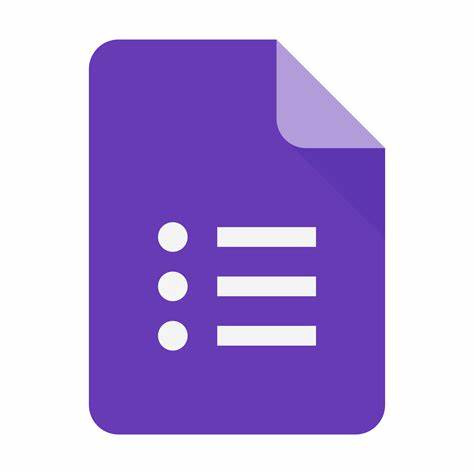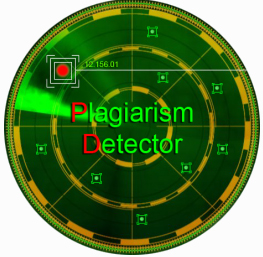METODE PROFILE MATCHING UNTUK PENENTUAN AMBALAN TERGIAT PADA GERAKAN PRAMUKA KECAMATAN JATISAMPURNA BEKASI
Abstract
DKR Jatisampurna Bekasi is a Group of Scout Members in the Jatisampurna area who are responsible for scouting management. Every year DKR Jatisampurna will choose the Most Active Ambalan in the Jatisampurna area. This study intends to get DKR Jatisampurna's active ambalan using Profile Matching. The Profile Matching method is used to compare individual/school competencies into competencies as the best shelves so that differences in competence (Gap Value) can be identified. The smaller the Gap Value generated, the greater the weighted score, which means that there is a greater opportunity for individuals/schools to become the best Troops in Jatisampurna district. The criteria provided by DKR Jatisampurna include the criteria of 35% Activeness, 35% Organizational, and 35% Non-Organizational. The three criteria are further divided into core and secondary factors, with the provisions of DKR Jatisampurna 50% core factor and 50% secondary for Activeness criteria, 60% core factor and 40% secondary for Organizational aspects, and 40% core factor and 60% secondary for non-organizational criteria. The end result of the profile matching process is the ranking of the shelves that can be used as the best shelves. Ranking is determined from the total value of the assessment sorted from the largest value to the smallest, where the alternative with the largest total value is selected as the final result. The profile matching method for determining the most active ambalan at DKR Jatisampurna Bekasi has worked well, with the highest score of 4.376875 for SMKN 14.
Full Text:
PDFReferences
E. P. Sari, A. Wahyuni, and N. Narti, “Sistem Informasi Sekolah Berbasis Web,” Indones. J. Softw. Eng., vol. 5, no. 1, pp. 87–94, 2019, doi: 10.31294/ijse.v5i1.5867.
D. C. P. Sinaga, B. Sianipar, and P. Marpaung, “Pemilihan Calon Manager Dari Pegawai Berprestasi Menggunakan Metode Profile Matching Pada CV. Glofacia Oceanic,” J-SAKTI (Jurnal Sains Komput. dan Inform., vol. 4, no. 2, pp. 643–656, 2020.
I. Oktaviani and A. Mulyani, “Pengembangan Aplikasi Surat Perintah Perjalanan Dinas (SPPD) Beserta Rincian Perjalanan Dinas di Badan Koordinasi Pemerintahan dan Pembangunan Wilayah IV Kabupaten Garut,” J. Algoritm., vol. 13, no. 1, pp. 58–62, 2016, doi: 10.33364/algoritma/v.13-1.58.
T. Stevanus and M. C. Wijanto, “Implementasi Profile Matching dalam Pengembangan Website Maranatha Jobfair,” vol. 3, no. November, pp. 365–379, 2021.
H. E. Sanjaya, A. P. Kusuma, F. Febrinita, U. I. Balitar, U. I. Balitar, and U. I. Balitar, “Dengan Menerapkan Metode Profile Matching Sebagai Alternatif Penentuan Dosen Favorit Pilihan Mahasiswa,” J. Antivirus, vol. 11, no. 2, pp. 164–182, 2017.
R. D. Kurniawati and I. Ahmad, “SISTEM PENDUKUNG KEPUTUSAN PENENTUAN KELAYAKAN USAHA MIKRO KECIL MENENGAH DENGAN MENGGUNAKAN METODE PROFILE MATCHING PADA UPTD PLUT KUMKM PROVINSI LAMPUNG,” J. Teknol. dan Sist. Inf., vol. 2, no. 1, pp. 74–79, 2021.
A. Verdian and A. Wantoro, “Komparasi Metode Profile Matching Dengan Fuzzy Profile Matching Pada Pemilihan Wakil Kepala Sekolah,” J. Ilm. Media Sisfo, vol. 13, no. 2, pp. 97–105, 2019.
M. Risaldi and T. Kristiana, “PENERAPAN PROFILE MATCHING UNTUK PENILAIAN SISWA TERBAIK PADA SMK WIDYA PATRIA 2 JAKARTA,” Komputa J. Ilm. Komput. dan Inform., vol. 11, no. 2, pp. 86–95, 2022.
S. Sumanto, “Profile Matching Untuk Pemilihan Produk Asuransi Terbaik,” JIMP (Jurnal Inform. Merdeka Pasuruan), vol. 5, no. 1, 2020.
T. Y. Akhirina, “Komparasi Metode Simple Additive Weighting dan Profile Matching pada Pemilihan Mitra Jasa Pengiriman Barang,” J. Edukasi dan Penelit. Inform., vol. 2, no. 1, pp. 27–33, 2016, doi: 10.26418/jp.v2i1.15500.
M. Kramer, “Best Practices in Systems Development Lifecycle: an Analyses Based on the Waterfall Model,” Rev. Bus. Financ. Stud., vol. 9, no. 1, pp. 77–84, 2018.
M Teguh Prihandoyo, “Unified Modeling Language (UML) Model Untuk Pengembangan Sistem Informasi Akademik Berbasis Web,” J. Inform. J. Pengemb. IT, vol. 3, no. 1, pp. 126–129, 2018.
S. Al-Fedaghi, “Validation: Conceptual versus Activity Diagram Approaches,” Int. J. Adv. Comput. Sci. Appl., vol. 12, no. 6, pp. 287–297, 2021, doi: 10.14569/IJACSA.2021.0120632.
DOI: https://doi.org/10.33365/jti.v17i1.2373
Refbacks
- There are currently no refbacks.
Copyright (c) 2023 Muhamad Sony Pratama, Sri Dianing Asri, Desi Ramayanti, Sri Andriati Asri, Widyadi Setiawan

This work is licensed under a Creative Commons Attribution-ShareAlike 4.0 International License.
JURNAL TEKNOINFO
Published by Universitas Teknokrat Indonesia
Organized by Prodi S1 Informatika FTIK Universitas Teknokrat Indonesia
W: http://ejurnal.teknokrat.ac.id/index.php/teknoinfo/index
E : teknoinfo@teknokrat.ac.id.
Jl. Zainal Abidin Pagaralam, No.9-11, Labuhan Ratu, Bandarlampung

This work is licensed under a Creative Commons Attribution-ShareAlike 4.0 International License.
Jumlah Pengunjung : View Teknoinfo StatsCounter



















